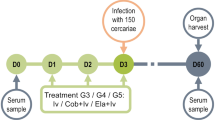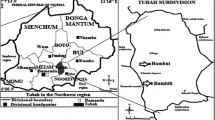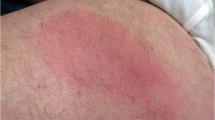Abstract
Pathogenic intestinal protozoa are responsible for clinically important infections in both the developed and the developing world. These organisms are responsible for both acute and chronic diarrhea, and Entamoeba histolytica, which affects the colon, can spread to involve the liver. Many of these pathogens, particularly the intracellular protozoa that predominantly affect the small intestine, produce their most devastating effects in patients with HIV/AIDS and other forms of immune deficiency. There are also various intestinal protozoa that do not seem to have any adverse effects on humans and can, therefore, be regarded as harmless commensal organisms. Although treatment has been available for several decades for giardiasis, isosporiasis and amoebiasis, until recently there have been no effective remedies for infection with intestinal coccidia—Cryptosporidium, Microsporidium and Cyclospora species. Cyclospora respond well to co-trimoxazole, microsporidia respond variably to albendazole, and cryptosporidia can often be eradicated by nitazoxanide. In chronically infected HIV-positive patients, treatment with multidrug regimens usually results in rapid resolution of the diarrhea and, in many instances, eradication of the parasite.
Key Points
-
Intestinal protozoa cause clinically significant infections in both the developed and developing worlds, particularly in individuals with impaired cell-mediated immunity
-
The clinical impact of infection with intracellular intestinal protozoa (Cryptosporidium, Microsporidia, Cyclospora, Isospora) in HIV-positive patients has been dramatically reduced following the introduction of highly active antiretroviral therapy (i.e. triple drug regimens)
-
Cryptosporidiosis was a major clinical challenge, but can now be effectively treated with nitazoxanide (a substituted benzamide); treatment with nitazoxanide is also effective and safe in children
-
Infection with the relatively new pathogen Cyclospora (like Isospora infection) can be cleared with co-trimoxazole
-
Microsporidiosis remains a therapeutic challenge, but clinical trials indicate that albendazole and fumagillin are effective therapeutic options, although clearance is not consistently achieved
This is a preview of subscription content, access via your institution
Access options
Subscribe to this journal
Receive 12 print issues and online access
$209.00 per year
only $17.42 per issue
Buy this article
- Purchase on Springer Link
- Instant access to full article PDF
Prices may be subject to local taxes which are calculated during checkout
Similar content being viewed by others
References
Farthing MJG (1989) Host–parasite interactions in human giardiasis. Q J Med 70: 191–204
Adam RD (1991) The biology of Giardia spp. Microbiol Rev 55: 706–732
Farthing MJG (1993) Giardiasis as a disease. In Giardia: From Molecules to Disease and Beyond. 15–37 (eds JA Reynoldson et al.) London: CAB International
Davidson RA (1984) Issues in clinical parasitology: the treatment of giardiasis. Am J Gastroenterol 79: 256–261
Crouch AA et al. (1986) Effect of twenty-three chemotherapeutic agents on the adherence and growth of Giardia lamblia in vitro. Trans R Soc Trop Med Hyg 80: 893–896
Abboud P et al. (2001) Successful treatment of metronidazole- and albendazole-resistant giardiasis with nitazoxanide in a patient with acquired immunodeficiency syndrome. Clin Infect Dis 32: 1792–1794
Butcher PD et al. (1994) Phenotypic and genotypic variation in Giardia lamblia isolates during chronic infection. Gut 35: 51–54
Gardner TB and Hill DR (2001) Treatment of giardiasis. Clin Microbiol Rev 14: 114–128
Zaat JO et al. (2000) Drugs for treating giardiasis. The Cochrane Database of Systematic Reviews, Issue 2, Art. No CD000217
Boreham PFL (1992) Current status of chemotherapy for giardiasis. In Giardia: From Molecules to Disease. 317–328 (Eds RCA Thompson et al.) Oxford: CAB International
Ortiz JJ et al. (2001) Randomized clinical study of nitazoxanide compared to metronidazole in the treatment of symptomatic giardiasis in children from Northern Peru. Aliment Pharmacol Ther 15: 1409–1415
Rossignol JF et al. (2002) Treatment of diarrhea caused by Giardia intestinalis and Entamoeba histolytica or E. dispar: a randomized, double-blind, placebo-controlled study of nitazoxanide. J Infect Dis 184: 381–384
Bailey JM and Erramouspe J (2004) Nitazoxanide treatment for giardiasis and cryptosporidiosis in children. Ann Pharmacother 38: 634–640
Anderson KA et al. (2004) Impact of Giardia vaccination on asymptomatic Giardia infections in dogs at a research facility. Can Vet J 45: 924–930
Olson ME et al. (2000) Giardia vaccination. Parasitol Today 16: 213–217
Stein JE et al. (2003) Efficacy of Giardia vaccination in the treatment of giardiasis in cats. J Am Vet Med Assoc 222: 1548–1551
Nime FA et al. (1976) Acute enterocolitis in a human being infected with the protozoan Cryptosporidium. Gastroenterology 70: 592–598
Current WL and Bick PH (1989) Immunobiology of Cryptosporidium spp. Pathol Immunopathol Res 8: 141–160
Farthing MJG (2000) Clinical aspects of human cryptosporidiosis. In Cryptosporidiosis and microsporidiosis. (Eds Petry F and Karger B) Contrib Microbiol 6: 50–74
Teixidor HS et al. (1991) Cryptosporidiosis of the biliary tract in AIDS. Radiology 180: 51–56
Ochiai Y et al. (2005) Detection and discrimination of Cryptosporidium parvum and C. hominis in water samples by immunomagnetic separation-PCR. Appl Environ Microbiol 71: 898–903
Baishanbo A et al. (2005) Infectivity of Cryptosporidium hominis and Cryptosporidium parvum genotype 2 isolates in immunosuppressed Mongolian gerbils. Infect Immun 73: 5252–5255
Schindler AR et al. (2005) Capillary electrophoretic analysis of fragment length polymorphisms in ribosomal markers of Cryptosporidium from humans. Mol Cell Probes 19: 394–399
Carr A et al. (1998) Treatment of HIV-1-associated microsporidiosis and cryptosporidiosis with combination antiretroviral therapy. Lancet 351: 256–261
Foudraine NA et al. (1998) Improvement of chronic diarrhoea in patients with advanced HIV-1 infection during potent antiretroviral therapy. AIDS 1: 35–41
Le Moing V et al. (1998) Decreased prevalence of intestinal cryptosporidiosis in HIV-infected patients concomitant to the widespread use of protease inhibitors. AIDS 12: 1395–1397
Clezy K et al. (1991) Paromomycin for the treatment of cryptosporidial diarrhoea in AIDS patients. AIDS 5: 1146–1147
Fichtenbaum CJ et al. (1993) Use of paromomycin for treatment of cryptosporidiosis in patients with AIDS. Clin Infect Dis 16: 298–300
Hoepelman AI (1996) Current therapeutic approaches to cryptosporidiosis in immunocompromised patients. J Antimicrob Chemother 37: 871–880
Doumbo O et al. (1997) Nitazoxanide in the treatment of cryptosporidial diarrhea and other intestinal parasitic infections associated with acquired immunodeficiency syndrome in tropical Africa. Am J Trop Med Hyg 56: 637–639
Rossignol JF et al. (1998) A double-blind placebo controlled study of nitazoxanide in the treatment of cryptosporidial diarrhoea in AIDS patients in Mexico. Trans R Soc Med 92: 663–666
Rossignol JF et al. (2001) Treatment of diarrhea caused by Cryptosporidium parvum: a prospective, randomized, double-blind, placebo-controlled study of nitazoxanide. J Infect Dis 184: 103–106
Amadi B et al. (2002) Effect of nitazoxanide on morbidity and mortality in Zambian children with cryptosporidiosis: a randomized controlled trial. Lancet 360: 1375–1380
Zulu I et al. (2005) Nitazoxanide for persistent diarrhoea in Zambian acquired immune deficiency syndrome patients: a randomized controlled trial. Aliment Pharmacol Ther 21: 757–763
Portnoy D et al. (1984) Treatment of intestinal cryptosporidiosis with spiramycin. Ann Intern Med 101: 202–204
Saez-Llorens X (1989) Spiramycin for treatment of Cryptosporidium enteritis. J Infect Dis 160: 342
Wittenberg DF et al. (1989) Spiramycin is not effective in treating Cryptosporidium diarrhea in infants: results of a double-blind randomized trial. J Infect Dis 159: 131–132
Dionisio D et al. (1998) Chronic cryptosporidiosis in patients with AIDS: stable remission and possible eradication after long-term, low dose azithromycin. J Clin Pathol 51: 138–142
Uip DE et al. (1998) Roxithromycin treatment of diarrhoea caused by Cryptosporidium spp. in patients with AIDS. J Antimicrob Chemother 41: 93–97
Sprinz E et al. (1998) AIDS-related cryptosporidial diarrhoea: an open study with roxithromycin. J Antimicrob Chemother 41: 85–91
Kelly P et al. (1996) Albendazole chemotherapy for treatment of diarrhoea in patients with AIDS in Zambia: a randomised double-blind controlled trial. Br Med J 312: 1187–1191
Kelly MP et al. (1998) Eradication of intracellular protozoa in AIDS patients using high dose albendazole [abstract]. Gastroenterology 114: A1007
Tzipori S et al. (1986) Remission of diarrhoea due to cryptosporidiosis in an immunodeficient child treated with hyperimmune bovine colostrum. Br Med J 293: 1276–1277
Tzipori S et al. (1987) Chronic cryptosporidial diarrhoea and hyperimmune cow colostrum. Lancet 2: 344–345
Ungar BLP et al. (1990) Cessation of Cryptosporidium-associated diarrhea in an acquired immunodeficiency syndrome patient after treatment with hyperimmune bovine colostrum. Gastroenterology 98: 486–489
Greenberg PD and Cello JP (1996) Treatment of severe diarrhea caused by Cryptosporidium parvum with oral bovine immunoglobulin concentrate in patients with AIDS. J Acquir Immune Defic Syndr Hum Retrovirol 13: 348–354
McMeeking A et al. (1990) A controlled trial of bovine dialysable leukocyte extract for cryptosporidiosis in patients with AIDS. J Infect Dis 161: 108–112
De Hovitz JA et al. (1986) Clinical manifestations and therapy of Isospora belli infection in patients with AIDS. N Engl J Med 315: 87–90
Trier JS et al. (1974) Chronic intestinal coccidiosis in man: intestinal pathology and response to treatment. Gastroenterology 66: 923–935
Pape JW et al. (1989) Treatment and prophylaxis of Isospora belli infections in patients with AIDS. N Engl J Med 320: 1044–1047
Sturchler D (1987) Parasitic diseases of the small intestinal tract. Baillieres Clin Gastroenterol 1: 397–424
Shlim DR et al. (1991) An algae-like organism associated with an outbreak of prolonged diarrhea among foreigners in Nepal. Am J Trop Med Hyg 45: 383–389
Ortega YR et al. (1993) Cyclospora species—a new protozoan pathogen of humans. N Engl J Med 328: 1308–1312
Hoge CW et al. (1993) Epidemiology of diarrhoeal illness associated with coccidian-like organism among travellers and foreign residents in Nepal. Lancet 341: 1175–1179
Hoge CW et al. (1995) Placebo-controlled trial of co-trimoxazole for Cyclospora infections among travellers and foreign residents in Nepal. Lancet 345: 691–693
Verdier RI et al. (2000) Trimethoprim–sulfamethoxazole compared with ciprofloxacin for treatment and prophylaxis of Isospora belli and Cyclospora cayetanensis infection in HIV-infected patients. A randomized, controlled trial. Ann Intern Med 132: 885–888
Modigliani R et al. (1985) Diarrhoea and malabsorption in AIDS: a study of four cases with special emphasis on opportunistic protozoan infections. Gut 26: 179–187
Orenstein JM et al. (1992) Localization of infection by the microsporidian Enterocytozoon bieneusi in the gastrointestinal tract of AIDS patients with diarrhoea. AIDS 6: 195–197
Blanshard C et al. (1992) Treatment of intestinal microsporidiosis with albendazole in patients with AIDS. AIDS 6: 311–313
Conteas CN et al. (2000) Therapy for human gastrointestinal microsporidiosis. Am J Trop Med Hyg 63: 121–127
Tremoulet AH et al. (2004) Albendazole therapy for Microsporidium diarrhea in immunocompetent Costa Rican children. Pediatr Infect Dis J 23: 915–918
Molina JM et al. (2002) Fumagillin treatment of intestinal microsporidiosis. N Engl J Med 346: 1963–1969
Cali A et al. (1993) Septata intestinalis N. G., N. sp., an intestinal microsporidian associated with chronic diarrhoea and dissemination in AIDS patients. J Eukaryot Microbiol 40: 101–112
Walsh JA (1986) Problems in recognition and diagnosis of amebiasis: estimation of the global magnitude of morbidity and mortality. Rev Infect Dis 8: 228–252
Stauffer W and Ravdin JI (2003) Entamoeba histolytica: an update. Curr Opin Infect Dis 16: 479–485
Gathiram V and Jackson TF (1987) A longitudinal study of asymptomatic carriers of pathogenic zymodemes of Entamoeba histolytica. S Afr Med J 72: 669–672
Li E and Stanley SL (1996) Amebiasis. Gastroenterol Clin North Am 25: 471–492
Stanley SL (2004) Antiparasitic agents. In Infectious diseases, Edn 2 1941–1960 (Eds Cohen J and Powderly WG). Edinburgh: Mosby
Arean VM and Koppisch E (1956) Balantidiasis: a review and report of cases. Am J Pathol 32: 1089–1115
Samranwetaya P et al. (1972) Fatal balantidial colitis. Report of a case. J Med Assoc Thai 55: 259–262
Garcia-Laverde A and De Bonilla L (1975) Clinical trials with metronidazole in human balantidiasis. Am J Trop Med Hyg 24: 781–783
Stenzel DJ and Boreham PFL (1996) Blastocystis hominis revisited. Clin Microbiol Rev 9: 563–584
Leder K et al. (2005) No correlation between clinical symptoms and Blastocystis hominis in immunocompetent individuals. J Gastroenterol Hepatol 20: 1390–1394
Schlim DR et al. (1995) Is Blastocystis a cause of diarrhea in travelers? A prospective controlled study in Nepal. Clin Infect Dis 21: 97–101
Jellinek T et al. (1997) The role of Blastocystis hominis as a possible intestinal pathogen in travellers. J Infect 35: 63–66
Amenta M et al. (1999) Intestinal protozoa in HIV-infected patients: effect of rifaximin in Cryptosporidium parvum and Blastocystis hominis infections. J Chemother 11: 391–395
Moghaddam DD et al. (2005) Blastocystis hominis and the evaluation of efficacy of metronidazole and trimethoprim/sulfamethoxazole. Parasitol Res 96: 273–275
Ok UZ et al. (1999) Effect of trimethoprim/sulfamethoxazole in Blastocystis hominis infection. Am J Gastroenterol 94: 3245–3247
Rossignol JF et al. (2005) Effect of nitazoxanide in persistent diarrhea and enteritis associated with Blastocystis hominis. Clin Gastroenterol Hepatol 3: 987–991
Author information
Authors and Affiliations
Corresponding author
Ethics declarations
Competing interests
The author has been involved in clinical trials of albendazole and nitazoxanide, and has received research funding for these trials from SmithKline Beecham Pharmaceuticals and Romark Pharmaceuticals.
Rights and permissions
About this article
Cite this article
Farthing, M. Treatment options for the eradication of intestinal protozoa. Nat Rev Gastroenterol Hepatol 3, 436–445 (2006). https://doi.org/10.1038/ncpgasthep0557
Received:
Accepted:
Issue Date:
DOI: https://doi.org/10.1038/ncpgasthep0557
This article is cited by
-
Development of amoebic liver abscess in early pregnancy years after initial amoebic exposure: a case report
BMC Gastroenterology (2020)
-
First report of Entamoeba moshkovskii in human stool samples from symptomatic and asymptomatic participants in Kenya
Tropical Diseases, Travel Medicine and Vaccines (2019)
-
Proteome analysis of excretory-secretory proteins of Entamoeba histolytica HM1:IMSS via LC–ESI–MS/MS and LC–MALDI–TOF/TOF
Clinical Proteomics (2016)
-
Development of metronidazole-resistant lines of Blastocystis sp.
Parasitology Research (2012)
-
Dietary supplementation of mannan-oligosaccharide enhances neonatal immune responses in chickens during natural exposure to Eimeria spp
Acta Veterinaria Scandinavica (2009)



